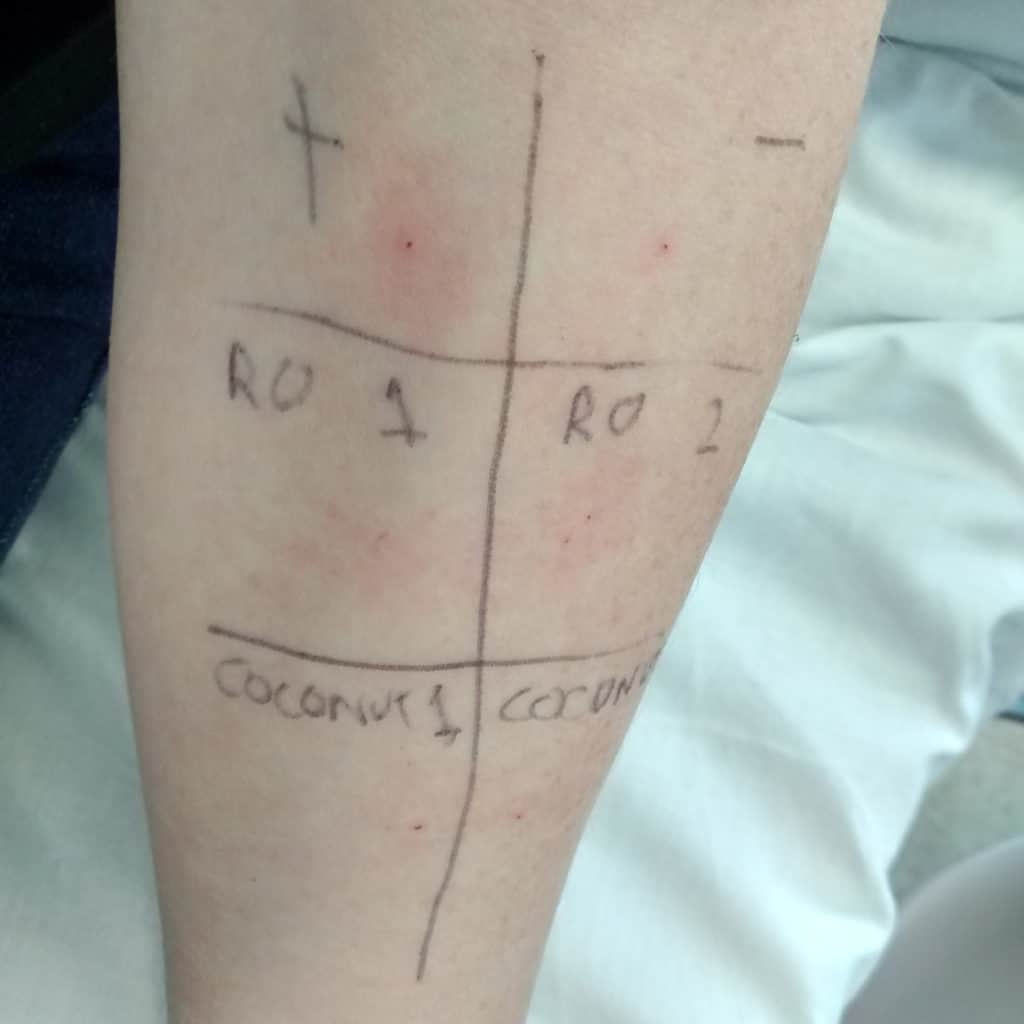
So far it has been a very long journey to find out what is wrong with me. It looks like I have lots of allergies but I don’t think I do. My doctors and I think we know what the problems are but to make sure we are on the right track we need to rule things (allergies) out in order to rule things in. Hello allergy testing…
When I say allergy testing I don’t mean someone plugging in a machine in and sticking it on your skin the back of a health food shop. That is called quackery! Pseudoscience, snake oil – whatever words you want to chose. Skin prick and challenge testing are scientific, evidence based, medical tests. That said I do not think medicine knows it all and has a long way to go. You often get false positives and negatives but it is the best approach we have. Science is a learning curve that never ends.
This week I was skin prick tested for allergies to red onion and coconut. Both (among other things) make me very ill but my suspicion is that it is not an allergy. I was also challenge tested for red onion. I need to go back in two weeks to be challenge tested for coconut as you can only do a challenge test on one food per session.
The skin prick test was pretty straightforward (see picture) you have a matrix drawn on your arm with two columns – one marked ‘+’ and one marked ‘-‘. The top row is the control: ‘+’ is histamine skin prick and ‘-‘ is water skin prick. Next your skin in pricked with the suspect food in both columns to see what reaction occurs. If your skin become red and raised around the skin prick you have an allergy. Most people react to histamine (the control). I only showed a reaction to histamine. I did not react in a significant way to the two foods in the skin prick test. So the next step is challenge testing.
I was tested on a fully equipped NHS ward with two nurses and two doctors with three patients.
Challenge testing involves a staged introduction to the food. First it is touched to the lips, then a small amount is chewed and spat out, then a sixteenth of the average portion amount is ingested. This carries on until you eat three times the normal portion amount. There is a fifteen minute interval between each step and pulse, blood pressure and peak flow are all measured. You are carefully monitored. If there is a significant reaction (not sure of what the definition is of significant think it is a 20% change) the test is stopped, you are treated appropriately (depending on the type and severity of the reaction) and you are ‘allergic’!
There was some discussion between me, the nurses and doctor about what a normal portion of red onion was. I was pretty surprised that there was not a prescribed amount or a way to calculate it (this was less rigorous than I expected!). But we all sort of agreed that a tablespoon was probably a portion. It was raw red onion and pretty unpleasant. I soldiered on and got through the test without any major changes to my pulse, blood pressure and peak flow. I felt pretty unwell after a short while and was ill the next day. But my response did not indicate an allergy.
However… I have been taking sodium cromoglicate for almost 18 months now and take ranitidine as well as antihistamine (and other stuff). You are asked to stop antihistamines two days before testing as they will affect the results. Ranitidine is an histamine H2 receptor antagonist. It is an antihistamine although this term is usually reserved for H1 receptor antagonists. If I had been told to stop the ranitidine I would but I’m not sure it would have made any difference. The build up of sodium cromoglicate in my system would affect the test also. This is all noted by the doctor in the report.
I’m not sure about the value of the tests for me with all the caveats around the medication I take – which probably affected the results. Next step is the coconut challenge testing. Let’s wait and see what the results are for that. It is all useful data and information for when I see the specialist in a few weeks.